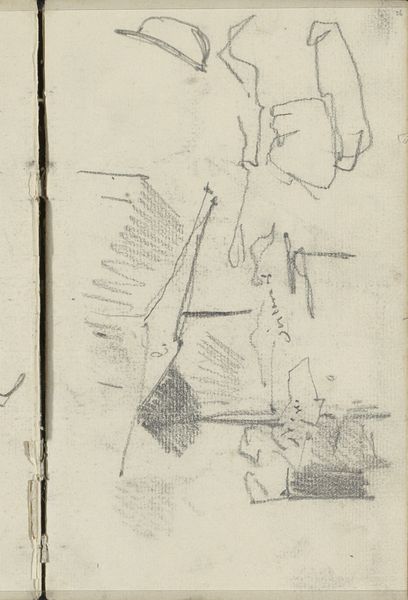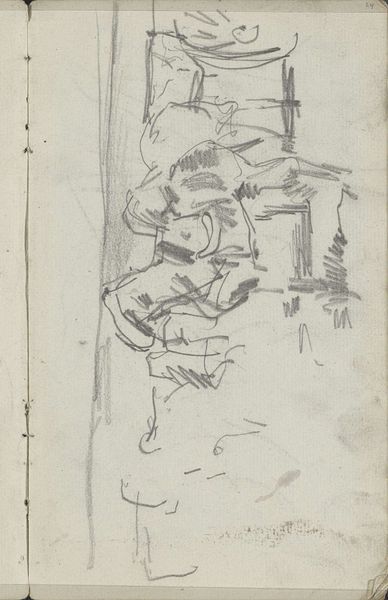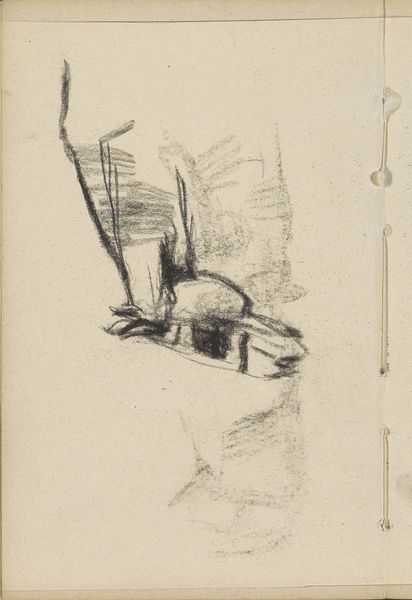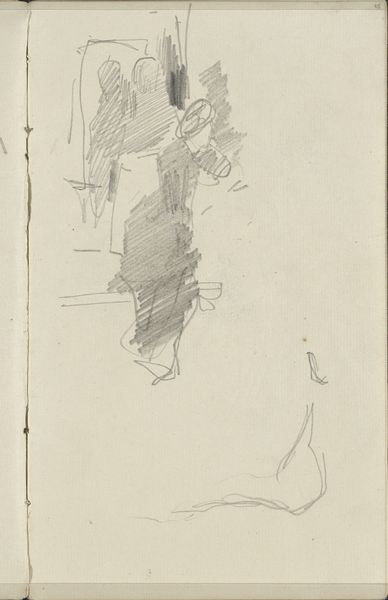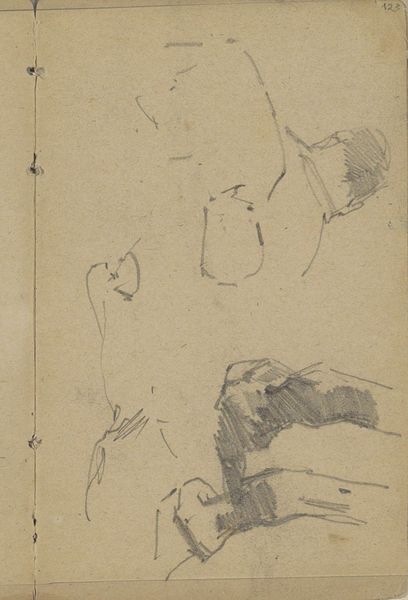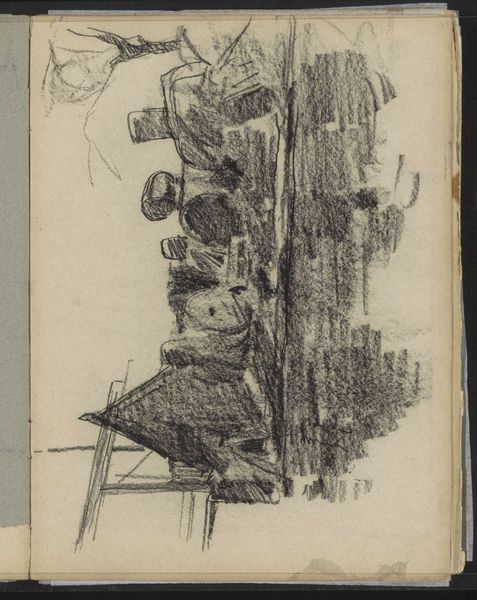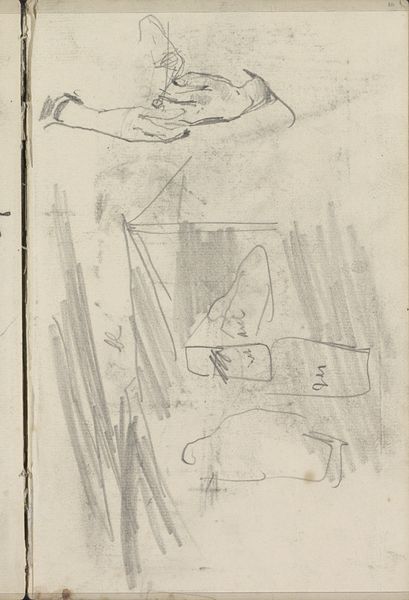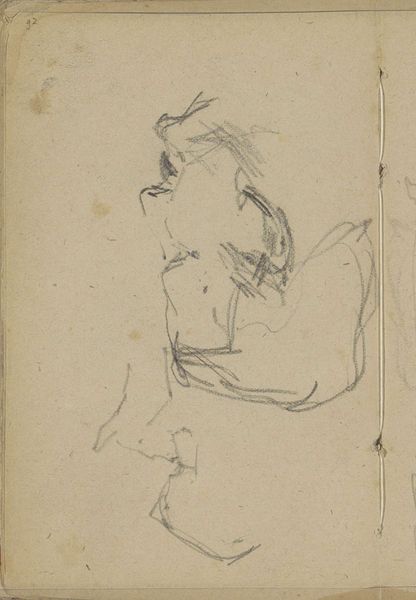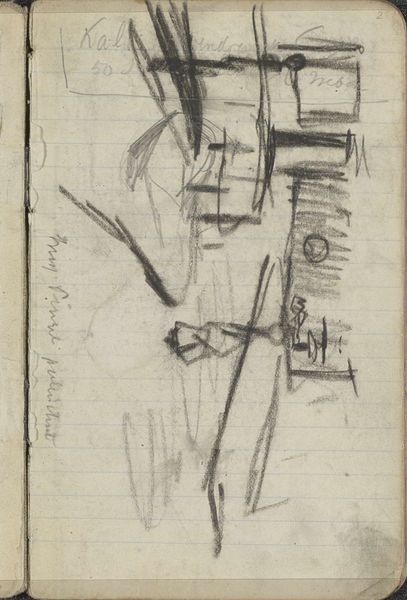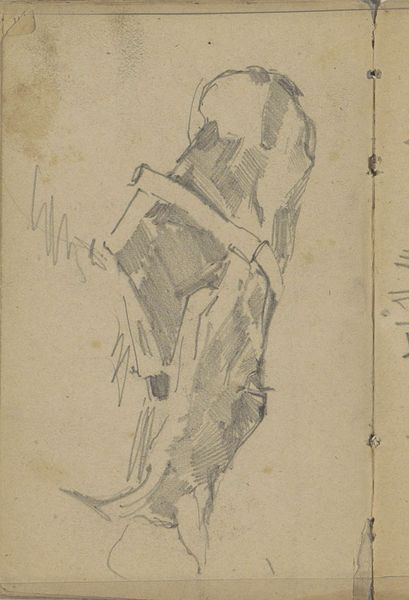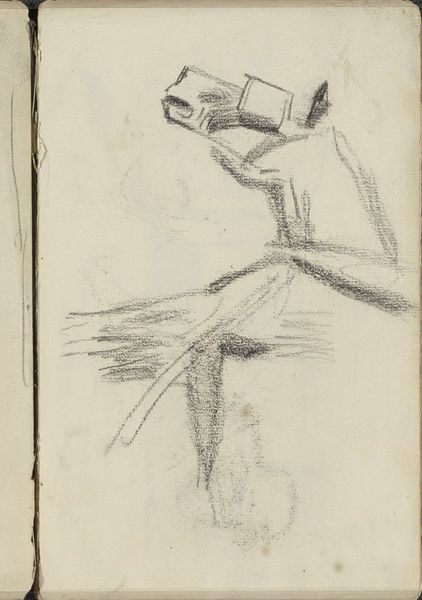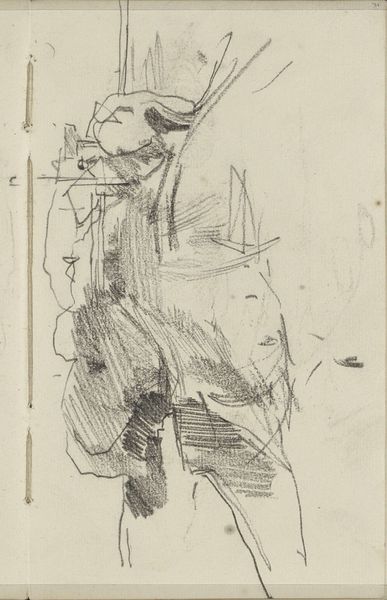
drawing, paper, pencil
#
portrait
#
drawing
#
amateur sketch
#
light pencil work
#
pencil sketch
#
sketch book
#
paper
#
personal sketchbook
#
idea generation sketch
#
sketchwork
#
detailed observational sketch
#
pencil
#
sketchbook drawing
#
sketchbook art
#
realism
Copyright: Rijks Museum: Open Domain
Curator: Before us, we have George Hendrik Breitner's drawing, "Twee vrouwen," created between 1881 and 1883. It’s part of the Rijksmuseum collection and rendered in pencil on paper. Editor: My first impression is the immediacy. The sketch-like quality really emphasizes process. It looks like a rapid study of form and light, more about capturing a moment than creating a finished piece. Curator: Precisely. Breitner is known for his gritty realism and this piece gives us a glimpse into his working method. Note the density of the pencil work around the figures, creating depth, against the relative bareness elsewhere. The forms suggest interior space, perhaps a glimpse into bourgeois domestic life. Editor: The materials themselves speak volumes. Pencil, readily available and easily transportable, points to a practical, almost documentary approach. The work shows the process; the means of production become part of the visual language. We get insight into his process, documenting observations quickly and informally. Curator: Yes, and there is also the formal aspect of the figures’ positioning; the juxtaposition of their heads—one in a dark hat, the other merely outlined. It suggests relationships within the composition, hinting at social dynamics without explicitly narrating them. Notice the tension in the light contrast; what appears as casual sketching has an internal logic when studied closely. Editor: I’m interested in the labor implied here. It would be easy to dismiss a sketch as less important, yet each mark signifies a conscious decision, a physical act. The visible effort to capture these figures—quickly, perhaps under challenging circumstances—deserves acknowledgment as physical labor too. Curator: True. I believe its apparent simplicity is a calculated choice. It encapsulates Breitner's larger project, documenting everyday Dutch life with honesty. The drawing captures that aesthetic well; using rudimentary materials he reveals rather than conceals life and time. Editor: Ultimately, I see this sketch as a record, not just of figures, but of a fleeting moment. A record made using readily available materials accessible to many. Curator: Indeed, a vital piece in understanding Breitner’s vision and practice, made possible with some paper and pencil. Editor: A lovely study!
Comments
No comments
Be the first to comment and join the conversation on the ultimate creative platform.
